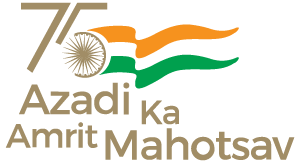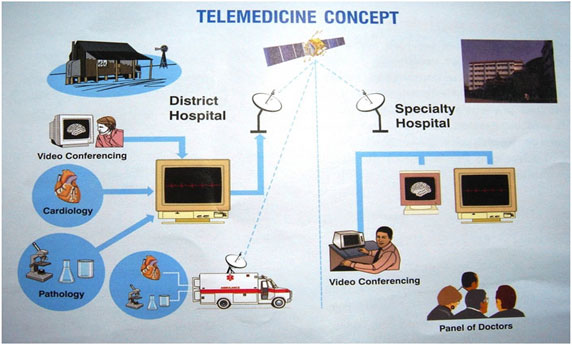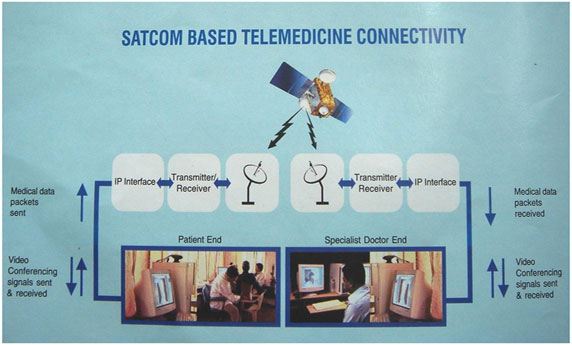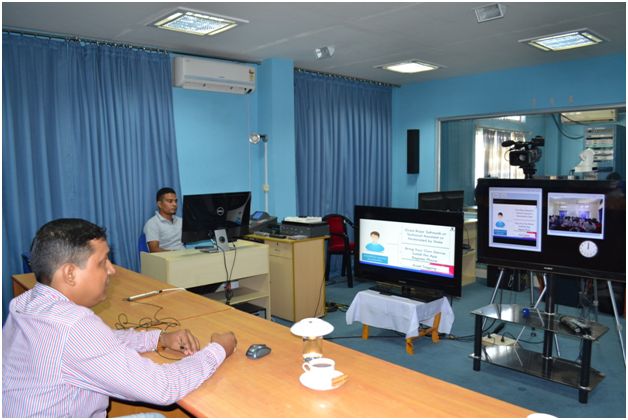One of the most important mandates of North Eastern Space Applications Centre (NESAC) is application of Satellite Communication (SATCOM) technology to undertake developmental communication programmes in the North Eastern Region (NER) to assist in education, health, social welfare and other developmental activities. The SATCOM application programs can address the dissemination of quality education- from primary to University level, provisioning of Medical and Health-care services, emergency communication support during disaster management etc. To cater to all these, ISRO has a number of vibrant SATCOM application programs like Telemedicine, Tele-Education, Communication support in disaster management etc. NESAC is playing the key role in implementation & utilization of all above application programs in all the eight states of NER in collaboration with other central/state government agencies, NGO’s etc.
Satellite Communication Applications

The available SATCOM facilities at NESAC are as follows:
- Studio facility for content generation and broadcasting of developmental programs.
- ISRO-VPN node for communication support in Disaster management
- Satellite Mobile Radio, Sat Sleeve, Sat Phones etc. for communication support in Disaster management.
- Various scientific equipment under ISRO-CNES-ONERA joint Ka-band propagation experiment program
- Systems under NaVIC project (ISTRAC/ISRO navigational program) and MCF Station.
The Ongoing SATCOM applications programs are as follows
Telemedicine is one of the vital SATCOM application programs of ISRO. The Telemedicine Program is an ICT enabled process of synergising benefits of Satellite communication and information technology with Biomedical Engineering and Medical Sciences to deliver the health care services to the remote, distant and underserved regions of the country. ISRO made a modest beginning in telemedicine using satellite communication in the form of a telemedicine pilot project in the year of 2001, connecting Apollo Hospital at Chennai with the Apollo rural hospital at Arogonda village in the Chittor district of Andhra Pradesh. Now a number of telemedicine networks are operational all over the country.
For north eastern states a project known as ISRO-NEC joint telemedicine project was formulated in July 2004 using satellite communication through Very Small Aperture Terminal (VSAT) to commission telemedicine nodes in all the districts of all the north eastern states including Sikkim. The state wise breakup of the nos. of telemedicine centre was: Arunachal Pradesh-8, Assam-23, Manipur-9, Mizoram-7, Meghalaya-9, Nagaland-8, Sikkim-4 and Tripura-4.The major objectives of the project was to connect the district level hospitals to the specialty/super specialty hospitals of the region as well as outside the region for better healthcare at minimum cost using modern technology. The major stakeholders of the project were ISRO, North Eastern Council (NEC) and state governments of the region. NESAC was coordinating the project from ISRO side in installation & commissioning of the system, training, monitoring, trouble-shooting etc. A total of 25 telemedicine centres were commissioned. The project was closed in 2018. Another telemedicine project known as Army Telemedicine Network for NER is also operational in the north eastern states in collaboration with Indian Army form March 2008. Under this network many telemedicine nodes have been commissioned in various army hospitals in the region. Under various different civilian networks, few other telemedicine nodes were set up by ISRO in NER. These telemedicine centres are providing services to the people of NER in health sector. Thousands of tele-consultancy and Continuing Medical Program (CME) have been carried out connecting many specialty and super-speciality hospitals like All India Institute of Medical Science, New Delhi; Narayana Hrudalaya, Bangalore; Amritha Institute of Medical Science, Cochin; Sri Ramchandra Medical College & Hospital, Chennai; Sanjay Gandhi Post Graduate Institute of Medical Science, Lucknow; Tata Memorial Centre, Mumbai; Fortis Hospital, Noida etc. A large nos. of patients as well as doctors are benefitting from this health service. NESAC is planning to revive the Tele-Medicine program in NER using internet as backbone.
| Name of State | Hub Location | Number of SITs | Nodal Agency |
|---|---|---|---|
| Assam | SIRD Extension Campus, Kahikuchi, Guwahati | 32 | State Institute of Panchayati Raj & Development, Govt. of Assam |
| Meghalaya | Directorate of Educational Research & Training, Shillong | 47 | Directorate of Educational Research & Training, Govt. of Meghalaya |
| Arunachal Pradesh | Rajiv Gandhi University, Itanagar | 51 | Rajiv Gandhi University |
| Tripura | State Council of Educational Research & Training, Abhoynagar | 50 | State Council of Educational Research & Training, Govt. of Tripura |
| Mizoram | State Council of Educational Research & Training, Aizawl | 50 | State Council of Educational Research & Training, Govt. of Mizoram |
| Nagaland | Building of IT & Communication, Kohima | 45 | Department of IT & Communication, Govt. of Nagaland |
| Sikkim | State Council of Educational Research & Training, Gangtok | 50 | State Council of Educational Research & Training, Govt. of Sikkim |
| Manipur | Sharing Hub facility with Meghalaya | 25 | State Council of Educational Research & Training, Govt. of Manipur |
NESAC is having SATCOM facility for communication support in case of disasters. NESAC being situated in a region which is vulnerable to natural disasters like earthquake, flood, cyclones, landslide etc, one of its mandate is to support the region at the time of disasters through its SATCOM facilities.
For this purpose, NESAC has one ISRO-DMS VPN node which is connected to National Disaster Management Authority, New Delhi as well as State Disaster Management Authority of all NER states through VSAT based SATCOM link using bandwidth of GSAT satellite. Video Conferencing & data transfer is possible with this facility. For doing multi-party video conferencing simultaneously, a video wall is also installed at NER-DRR facility.
Apart from this, NESAC also has portable satellite phones like various ISRO developed GSAT-6 based Satellite Mobile Radio, Broadcast Receiver, Reporting Terminal & Sat-Sleeve terminals as well as other devices for Emergency Communication. NESAC has also distributed 10 numbers of SMRs to Meghalaya Police for their strategic use.
NESAC has a studio facility for content generation and broadcasting. It is equipped with all required hardware and software for quality multimedia content generation on various topics for capacity building. NESAC has prepared multimedia content for various user departments at the studio with the help of specialists from NDRF, ABITA-GKUP etc as well as Scientists from NESAC. NESAC plans to upgrade the studio for internet based virtual classroom facilitation for capacity building.
ISRO-CNES-ONERA joint Ka-Band Propagation Experiment is operational at NESAC with sophisticated equipment like Beacon Receivers, Rain Gauge, Laser Precipitation Monitor, Humidity Profiling Radiometer etc. It is basically a study of attenuation of Ka-Band satellite to earth communication signal (20-30 GHz range) due to various meteorological conditions like rain, hail, clouds etc. The ITU model for rain attenuation has been proved to be insufficient to predict signal attenuation in tropical high rainfall regions like India. Therefore, a more detailed in-situ study is required to properly model Ka-Band signal attenuation in India as there is a growing demand for using the Ka-Band signal for high bandwidth applications in India. The experiment is being carried out with the help of two beacon transmitters onboard the GSAT-14 satellite and is operational from 2016 onwards at NESAC.
NESAC houses one NaVIC ground station, also called IRCDR. The station is maintained by ISTRAC, ISRO and is manned by ISTRAC,ISRO Engineers. Communication link is established between IRCDR and INC, Byalalu through satcom and terracom links for remote controlling the IRCDR 11 meter parabolic reflector dish antenna.
NESAC does Necessary Handholding & technical coordination for newly commissioned MCF Station at NESAC Campus.

NESAC provides necessary operational support for running the Hub cum Ground Station for ISRO’s High Throughput Satellite(HTS) GSAT-29 at Guwahati, Assam.











